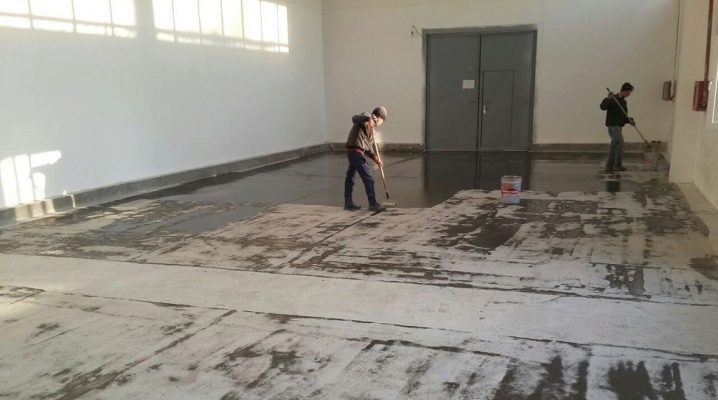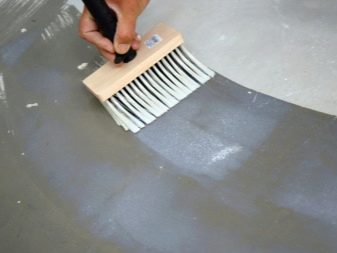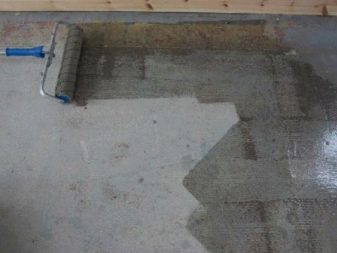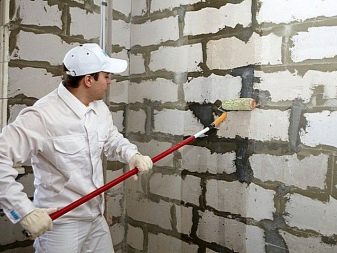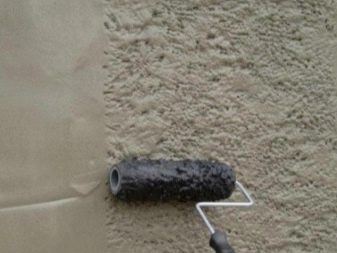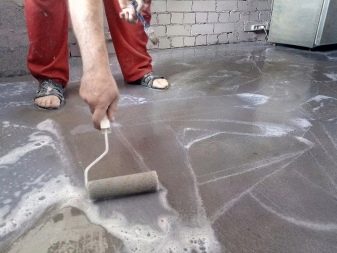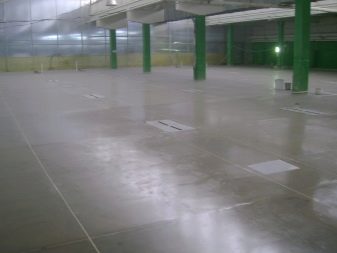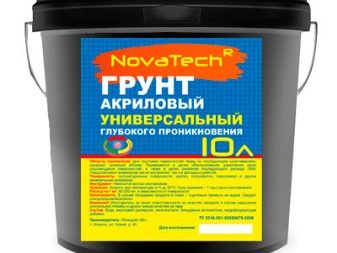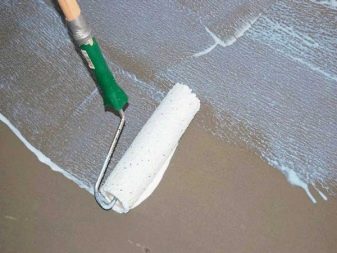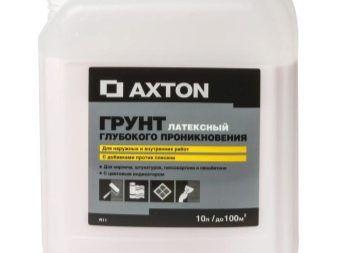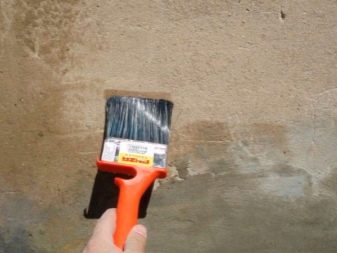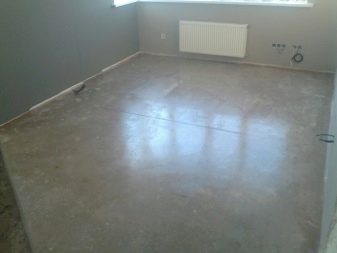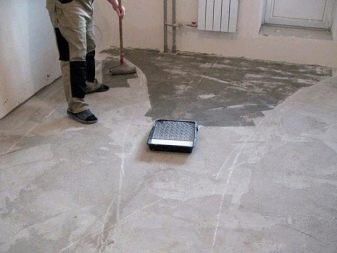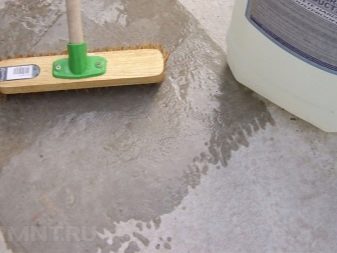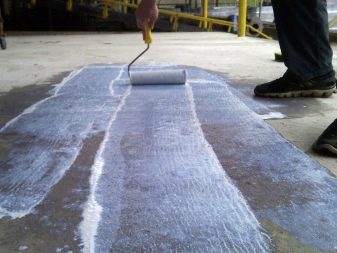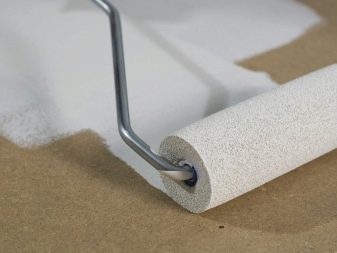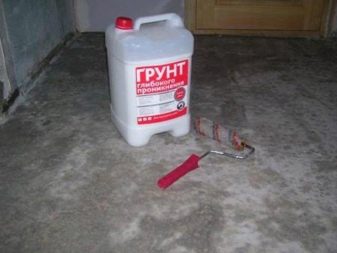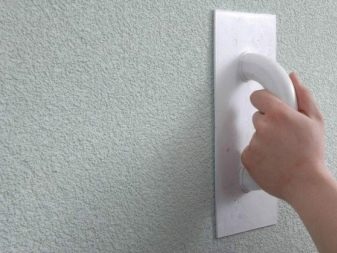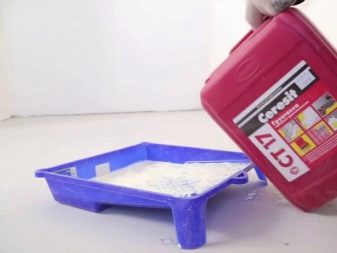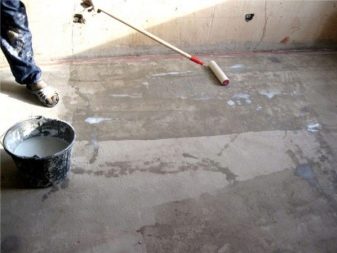Deep penetration primer for concrete: types and specifications
Today, a wide variety of materials is used to perform indoor finishing works, and a special place in this list is occupied by a deep penetration primer. Through the use of this composition, the repair process can be made at a fairly high level.
Today, the primer is available in several types.that are suitable for different types of work. But first you need to familiarize yourself with the features of this material.
Special features
Before you get acquainted with the main types of primers deep penetration, it is necessary to understand what is this material and how it differs from other compositions.
This option is a kind of impregnation for the concrete surface. The primer can penetrate to a depth of 5 to 10 mm, depending on the type used.
Through the use of this composition can provide maximum adhesion of concrete and material for finishing. The penetrating primer has a high degree of moisture resistance and also has vapor permeable properties.
In addition, it has high antiseptic properties that do not allow the development of mold and mildew on the concrete surface.
Another feature of the penetrating primer is that it can reduce the consumption of those finishing materials that will be used in the future.
The use of the composition has a positive effect on the air in the room. In this case, the primer has an insulating function inside the material.
After treatment with a penetrating composition, the surface becomes more resistant to various external influences. For example, this concerns the use of chemicals that often lead to abrasion.
Scope of application
As noted above, the primer is used in the preparation of the walls.The composition is used if there is a risk that the material for finishing will loosely adhere to the concrete surface.
The deep penetration primer significantly improves the adhesion of the substrate, which eliminates the occurrence of a similar problem during operation.
Often the composition is used in the absence of monolith insulation. On the basis of a large number of pores, finishing materials are not fixed in the best way. That is why experts recommend the use of deep penetration primer, which "seals" all channels. The composition prevents the rapid absorption of various substances, which allows you to securely fix the finish.
The primer of deep penetration is used for both internal and facade works. It well protects concrete surfaces from the influence of aggressive substances present in the atmosphere.
Main types
The construction market is rich in various types of deep penetration primers. To understand which of the options is best used to prepare the concrete surface, it is necessary to familiarize yourself with the properties of each individual composition.
The first and one of the most common types is a universal primer. Most often the structure is used for carrying out internal works. Often, universal penetrating options are used for exterior cladding repair processes.
Primers are suitable for both vertical and horizontal surfaces.
As for the cost of universal options, it is relatively low. In addition, the consumption of primer during operation is small, which is one of the significant advantages. Universal options are recommended to be stored at a temperature of 5 to 35 degrees.
After treatment with penetrating primer, the concrete surface must be left for 4-5 hours to dry completely.
According to the manufacturers themselves, universal formulations belong to environmentally friendly groups of building products. After processing the surface will be well strengthened and prepared for further manipulations. Often, a universal primer is applied on a heated coupler.
The next type is acrylic compositions. This option can be used to process any base, ranging from wood to concrete.Many experts attribute the acrylic primer to the universal types. The main feature of the composition is deep penetration into the base, which greatly simplifies the entire repair process in the future.
Often, manufacturers complement the base of the primer with various additives, which increases its performance. Most often, the composition is combined with antiseptic components, so that impregnation can be used to prepare surfaces in the bathroom.
The primer prevents the appearance of mold, which occurs when exposed to high humidity.
Separate species are anti-fungal compounds. This penetrating primer is suitable for various surfaces, including concrete. A distinctive feature of this type is the presence of fungicides in the base - components that can quickly destroy fungal spores. In addition, impregnation prevents the development of harmful microflora in the room.
Anti-fungal primers can have a different base, which is their main advantage. For the preparation of concrete surfaces used different types of compositions.It should be noted that the use of such impregnation is recommended for the treatment of those surfaces that have already been affected by mold.
Pay attention to the fact that antifungal formulations are used exclusively to prepare the base for wallpaper. In addition, the impregnation has a rather sharp smell.
Another type is an antiseptic penetrating primer. Unlike the previous version, these compounds are used to prevent the development of harmful microflora. The primer is used to treat surfaces that are still not affected.
Most often, antiseptic formulations are used to prepare the walls and floor in the toilet and bathroom. Apply primer before laying the floor material. In the basis of high-quality antiseptic impregnation fungicides are always present. The advantage of primers is that they perform a strengthening function in working with loose bases.
To eliminate the deficiencies on the surface, latex penetration impregnations are used. They are based on water and polymers that provide decent technical properties for this species. These compounds are indispensable for the treatment of metal, concrete and wood.Often this type of primer is combined with alkyd variants.
The universality of the compositions lies in the fact that they can be used for internal and external works. Latex primer well strengthens the base, which is strongly absorbed by various substances.
Separate views are front impregnations. Silicone and silicate formulations are the ideal solution for outdoor work. With the help of such options it is possible to make the treatment of cracks before filling.
How to choose?
Choosing high-quality impregnation for the concrete surface, you should pay attention to a few important points.
- Type of work. If you intend to use a primer for exterior work, it is best to choose acrylic or silicate compounds that are highly resistant to low temperatures. Latex or acrylic impregnation is an ideal choice for processing walls indoors.
- Material. For concrete surfaces, it is recommended to use alkyd or acrylic compositions that will reliably strengthen the base and qualitatively prepare it for further manipulations.
- Finish Decide in advance on what material you will use after surface preparation. Different types of impregnations are used for wallpaper, plaster or paint.
Another significant criterion is the drying time. If the primer is used for interior work, it is best to use compounds that require 2-3 hours. This is due to the fact that the primer is applied in several layers, and long-term drying significantly slows down the repair process.
You should also pay attention to the manufacturer and the cost of the penetrating composition. It is best to choose a product from a well-known brand, which has managed to give a good account of itself.
How to apply?
When working with deep penetration impregnation for concrete, several important rules should be considered. Before applying the composition must be carefully prepared base. It is necessary to clean the surface from contamination, to crack the cracks, and to remove the stains with a special solution. The concrete base must be clean and dry.
Next you need to prepare mortar, focusing on the instructions from the manufacturer. Most often, the composition is kneaded in a 1: 1 ratio (primer and water). For applying the finished mixture using a brush or roller.To speed up the process of surface preparation will help spray gun.
Please note that before starting work it is recommended to wear rubber gloves. This will protect the skin from getting into the composition. After this penetrating impregnation is applied evenly distributing over the entire surface. If the base is fast absorbing, you will need 2 layers.
As for the consumption of penetrating primer, then everything depends on the surface itself. The average is 80-120 g per 1 m². Experts recommend leaving the surface for 24 hours so that it is fully ready for further manipulations.
How to choose a primer, see the following video.
